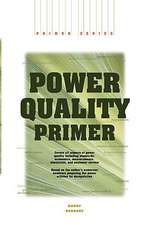Lean Supply Chain Management Essentials: A Framework for Materials Managers
Autor Bill Kerber, Brian J. Dreckshageen Limba Engleză Paperback – 25 mar 2011
The book focuses on the materials management aspects of Lean, such as leveling work into the value stream, heijunka scheduling, standard work, and the concept of intervals, including Every Part Every Interval (EPEI). By combining traditional materials management tools, such as Sales and Operations Planning (S&OP), with Lean manufacturing approaches and applying them to different manufacturing environments, the authors clarify the logic behind why you are doing what you’re doing with Lean components and how they fit together as a system. Specifically, they explain how to:
- Determine which leveling strategy to use to smooth production
- Calculate interval to determine lot sizes in various production environments
- Apply Lean to purchasing, warehouse, and logistics areas
- Use your value stream map for green initiatives and risk management
- Replace capacity planning and shop floor control with visual factory, operator balance charts, EPEI, and plan for every part
Preț: 411.39 lei
Preț vechi: 530.46 lei
-22% Nou
Puncte Express: 617
Preț estimativ în valută:
78.72€ • 82.78$ • 65.05£
78.72€ • 82.78$ • 65.05£
Carte tipărită la comandă
Livrare economică 16-30 aprilie
Preluare comenzi: 021 569.72.76
Specificații
ISBN-13: 9781439840825
ISBN-10: 1439840822
Pagini: 280
Ilustrații: 118 black & white illustrations, 36 black & white tables
Dimensiuni: 174 x 246 x 18 mm
Greutate: 0.5 kg
Ediția:1
Editura: Taylor & Francis
Colecția CRC Press
Locul publicării:Oxford, United Kingdom
ISBN-10: 1439840822
Pagini: 280
Ilustrații: 118 black & white illustrations, 36 black & white tables
Dimensiuni: 174 x 246 x 18 mm
Greutate: 0.5 kg
Ediția:1
Editura: Taylor & Francis
Colecția CRC Press
Locul publicării:Oxford, United Kingdom
Public țintă
Professional Practice & DevelopmentNotă biografică
Bill Kerber, Brian J. Dreckshage
Cuprins
Introduction, Chapter 1 Lean Basics, Chapter 2 Executive S&OP, Forecasting, and Customer Relationships, Chapter 3 Leveling and Heijunka, Chapter 4 Dependent Demand Materials, Chapter 5 Capacity Management and Shop Floor Control, Chapter 6 Inventory Management, Chapter 7 Lot Sizing, Chapter 8 Warehousing and Logistics, Chapter 9 Quality Control, Chapter 10 Purchasing, Chapter 11 Lean System, Appendix 1: The Myth of the Bell-Shaped Curve: Inventory Leveland Customer Service, Appendix 2: The Bullwhip Effect, Appendix 3: Lean Implementation Methodology, Appendix 4: Using Your Value Stream Map for Green Initiatives and Risk Management
Descriere
This book explains why the traditional materials planning environment, typically embodied by an Enterprise Resource Planning (ERP) system, is an ineffective support system for a company that wants to adopt Lean practices. It offers an alternative methodology for implementing Lean into the supply chain that allows for ongoing experimentation, learning, and improvement. After defining supply chain management and Lean basics, it explores the conflicts between Lean and the traditional framework. It includes a chart that matches Lean tools with the planning and control charts that have served as the model for ERP systems.
















